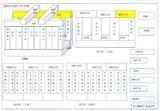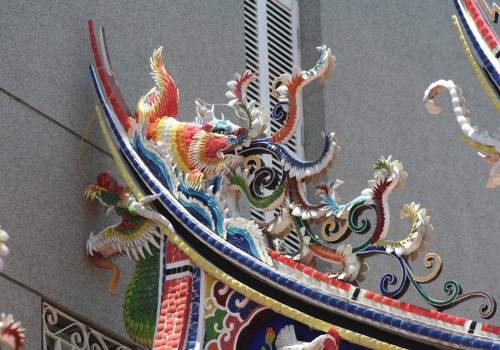TELDAP Collections
| Hill-fish or Tortoise-fish? Confused About the Difference |
|
_^“Lingyu (Hill-fish) has a human face, hands and feet, and the body of a fish. It lives in the sea.”
-Shanhai Jing, Chapter 12: Haineibei Jing
“Longyu (Dragon-fish) lives in the mountains in the North and has the appearance of a wildcat or small fox-like creature. Also said to be a prawn. It was ridden by gods travelling the nine wildernesses. Some call it the Bieyu (Tortoise-fish) and say it dwells in the north of the Yao wilderness and has the appearance of a carp.
-Shanhai Jing, Chapter 7: Haiwaixi Jing_^
The _^Shanhai Jing_^ (Classic of the Mountains and Seas) writes that Lingyu (Hill-fish) has the face and limbs of a human, the body of a fish, and lives in the sea. It also tells that in the north of a fertile land there lives the Longyu (Dragon-fish), which looks like a carp. Later work in textual criticism determined that the Lingyu and Longyu are the same creature. This suggests that Lingyu is an amphibian, which makes it different from a mermaid, a creature from Greek Mythology also depicted with a human torso and fish tail.
There is also the legend of “Carp Striving to Jump over the Dragon Gate.” It is known that carp dwelling in the Yellow River travel upstream to Longmen waterfall (Longmen meaning ‘dragon gate’). According to this legend, one of these thousands of fish could eventually jump over Longmen, the dragon gate, and be gradually transformed into a dragon. Before the transformation is complete, the creature is called an Ao, a sort of giant turtle.
In one of the works in the Creative Comic Collection, _^The Loss of the Holy Seal_^ by Yin Yin, the heroine of the story, also named Lingyu, was actually an Aoyu (another name for Tortoise-fish) in her original form. The Aoyu is a carp in the process of becoming a dragon and has the body of a fish with the head of a dragon. This symbolizes the creature’s entrance into a whole new world and signifies the beginning of a glorious future.
_^“Jinwu has a head like that of a beauty, the tail of a fish, the head of a dragon, and a pair of wings. Jinwu has supernatural power and does not sleep. Therefore, it is usually summoned as a patrol guard. Aoyu has the appearance of a dragon and likes to swallow fire and likes wind and rain. Aoyu carries Mount Penglai on its back in the sea. Therefore, it is often placed at the end of the roof ridge.
-“A Pictorial of Adornments on Historical Taiwanese Buildings”_^
Another auspicious symbol in Chinese tradition similar to Aoyu is ‘Jinwu’. The difference lies in that Jinwu is a kind of bird, and while also having the head of a dragon and the torso of a fish, has a pair of wings as well. Jinwu is said to have liked patrolling. The name Jinwu derives from the name of a government title, “Zhijinwu,” used during the Han dynasty. The responsibility of the Zhijinwu was to patrol the capital, keeping the peace. Like a modern day police officer, upon discovering fire, he would dispatch Lingyu (ie. firefighters) to put out the fire. Therefore, Jinwu and Lingyu are commonly used in decorations on traditional wooden buildings.
Aoyu is believed to like to swallow fire and spit water, which makes it a creature that helps prevent fire and attract rain. Therefore, the Aoyu is an auspicious symbol commonly seen in temples and shrines, guarding these structures from the threat of fire and other calamities. On the end of swallow tail roof ridges1 of most temples, one can see clay sculptures of Aoyu spitting water.
Ornamental “Aoyu Spitting Water” at the end of a swallow tail roof ridge. Location: Beiji Shrine, Tainan
Picture courtesy of Hsing Kuo University of Management
Moreover, Aoyu are also a common theme used to embellish queti, decorative corner braces, in the hope of shielding the buildings from fire and disasters. Queti, also known as tuomu or chajiao, are triangular, carved, openwork wooden pieces placed at the corners of uprights and cross beams. The function of a queti is to prevent movement caused by horizontal pressure, thus having a role in the stabilization of right angles and solidification of beams. Common decorative themes on queti include phoenixes, Aoyu, birds and flowers, notable figures, and so on.
A corner brace furnished in the form of an Aoyu at the Kings of the Three Mountains Temple, Tainan
Picture courtesy of Hsing Kuo University of Management
Footnote:
1 Swallow tail roof ridge: A kind of roof ridge construction where both ends of the ridge curl upward and split in two, as that of a swallow’s tail. In general, only temples, government offices, and houses of graduates of provincial-level or higher imperial examinations could feature swallow tail roof ridges.
References:
Hao Yixin (2010). Shanhai Jing with Annotations. The Literary Collection of Hao Yixin, Vol. 6. Qilu Press, Jinan, China.
Li Qianlang (2003). An Illustrated Introduction to Historical Taiwanese Buildings. Yuan-Liou Publishing Co., Ltd., Taipei.
Kang Nuoxi (2007). A Pictorial of Adornments on Historical Taiwanese Buildings. Owl Publishing House, Taipei.
Further Reading:
CCC2: The Loss of the Holy Seal (I)
CCC3: The Loss of the Holy Seal (II)
CCC4: The Loss of the Holy Seal (III)
CCC5: The Loss of the Holy Seal (IV)
Related Collections:
 Title: Han Dynasty Tomb at Caodian, Nanyang County (Painting No. 35)
•Identification information: Registration No.: 28044
1/41
Title: Memorial Stone of Wu Rong, a Han Dynasty Zhijinwu
•Identification information: Registration No.: 03673
2/41
 Title: Han Dynasty Tomb at Caodian, Nanyang County (Painting No. 27)
•Identification information: Registration No.: 03673
3/41
Title: Han Dynasty Tomb at Caodian, Nanyang County (Painting No. 28)
•Identification information: Registration No.: 28064
4/41
Title: Memorial Stone of Wu Rong, a Han Dynasty Zhijinwu
•Identification information: Registration No.: 186683
5/41
 Title: Paintings from Nanyang County (Painting No. 18)
•Descriptions: Patterns—Zhijinwu Doorman
•Identification information: Registration No.: 27164-2
22/41
Title: Paintings from Nanyang County (Painting No. 35)
•Descriptions: Patterns—Zhijinwu Doorman
•Identification information: Registration No.: 27174
25/41
|













